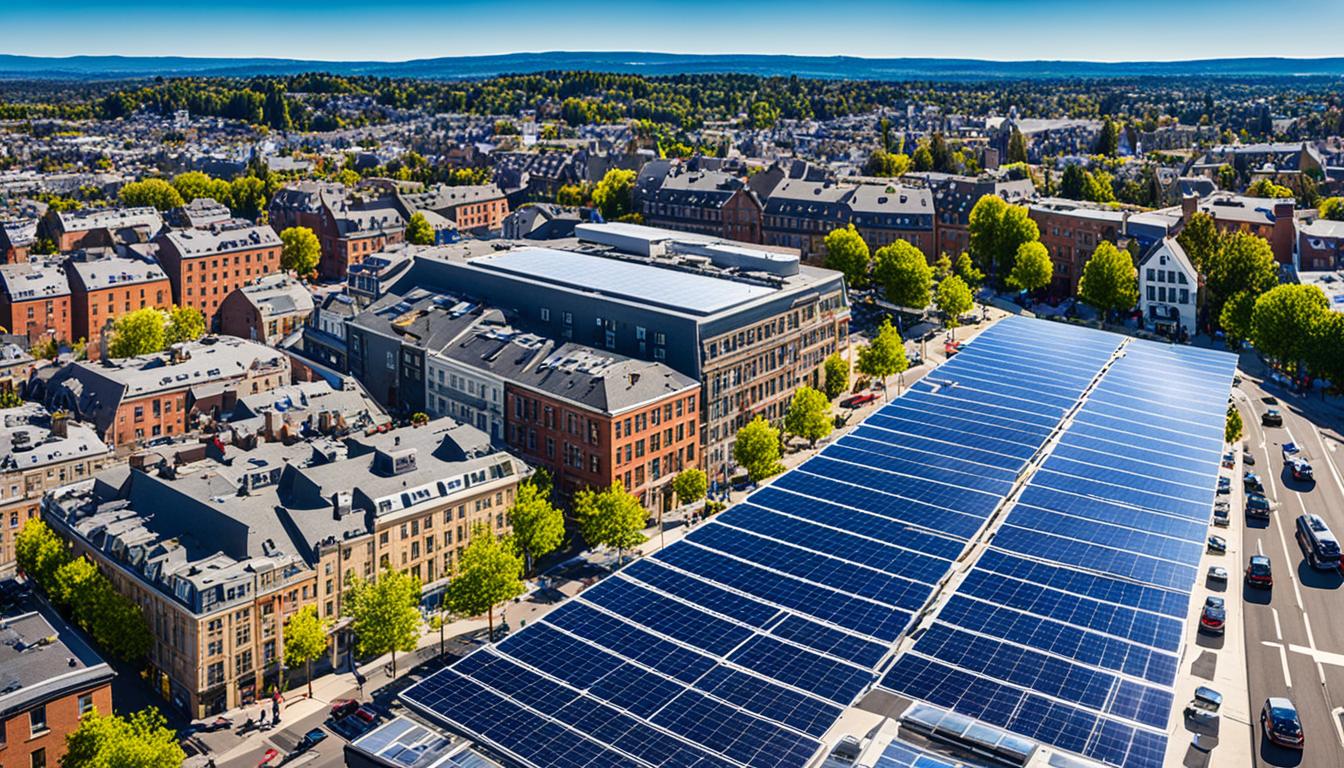
History of Solar Energy

Ethan Howard
Posted 11/28/2023
The Evolution of Solar Technology
As we delve into the history of solar energy and its impact on our energy future, it is crucial to understand how solar technology has evolved over time. The development of solar panels and the advancements in photovoltaic (PV) systems have played a significant role in making solar energy more accessible and efficient.
Solar panels, also known as photovoltaic panels, are at the heart of solar power generation. These panels consist of interconnected solar cells that convert sunlight into electricity. The first solar panels were developed in the 1950s and were only capable of generating a small amount of power. However, with continuous advancements in technology, solar panels have become more efficient, durable, and affordable.
One of the key milestones in the evolution of solar technology was the invention of the photovoltaic effect. In 1839, French physicist Alexandre Edmond Becquerel discovered that certain materials produced an electric current when exposed to light. This groundbreaking discovery laid the foundation for solar panels and the harnessing of solar energy.
Over the years, scientists and engineers have worked tirelessly to improve the efficiency of solar panels. They have experimented with various materials and designs to maximize the conversion of sunlight into electricity. Today, modern solar panels can convert around 20% to 22% of the sunlight they receive into usable electrical energy.
Furthermore, the development of PV systems has revolutionized the utilization of solar energy. PV systems consist of multiple solar panels interconnected to form an array. These systems can be installed on rooftops, open land, or even integrated into building materials. The electricity generated by PV systems can be used to power homes, businesses, and even entire communities.
With the advancements in solar technology, PV systems have become more efficient, reliable, and cost-effective. In addition, various innovations, such as solar tracking systems, have been introduced to optimize the performance of solar panels by maximizing their exposure to sunlight throughout the day.
As we continue our journey into the history of solar energy and its impact on our energy future, it is important to recognize the pivotal role that solar panels and PV systems have played in making solar power a viable and sustainable alternative to traditional energy sources. The evolution of solar technology has not only made solar energy more accessible but has also contributed to reducing our carbon footprint and mitigating the effects of climate change.
Solar Energy's Impact on Our Energy Future
The history of solar energy reveals its continuous growth, surpassing its humble beginnings to become a prominent player in shaping our energy future. Solar power has revolutionized the way we harness energy, providing a viable alternative to traditional sources.
The Rise of Solar Power
In recent years, solar technology has made tremendous advancements, making solar energy a cleaner and more sustainable option. With the increasing awareness of environmental concerns and the need for renewable energy sources, more individuals and businesses are embracing solar power.
The adoption of solar panels has soared due to its numerous benefits. By harnessing the power of the sun, we can generate electricity without producing harmful emissions or depleting finite resources. This shift towards cleaner energy sources is crucial in mitigating climate change and protecting our planet for future generations.
The Role of Tax Incentives
Tax incentives have played a significant role in the growth and widespread adoption of solar energy. In the 1970s, the introduction of tax incentives, such as the Investment Tax Credit (ITC), encouraged individuals and businesses to invest in solar panels. These incentives provided financial relief and motivated people to embrace solar technology.
By offering tax benefits, governments around the world demonstrated their commitment to supporting renewable energy and reducing reliance on fossil fuels. The tax incentives helped offset the initial costs of installing solar panels, making it an attractive investment for both residential and commercial properties.
As a result of these incentives, the solar industry experienced exponential growth, leading to improved technology, increased production, and reduced costs. Today, solar energy has become more accessible and affordable, contributing to the overall transition towards a sustainable energy future.
Conclusion
The history of solar energy has been a remarkable journey from its humble beginnings to the innovative modern technology we have today. Over the years, solar power has emerged as a key player in reshaping our energy landscape, offering a sustainable and greener alternative to traditional energy sources.
With its numerous environmental and economic benefits, solar energy holds the potential to revolutionize our energy future. By harnessing the power of the sun, we can significantly reduce greenhouse gas emissions, combat climate change, and create a cleaner and healthier planet for future generations.
Embracing solar energy is not just a choice, but a necessity. As the world grapples with pressing energy challenges, solar power provides an opportunity to diversify our energy portfolio, reduce dependence on non-renewable resources, and achieve energy independence. By investing in solar technology, we can create jobs, stimulate economic growth, and foster a more resilient and sustainable society.
FAQ
How has solar technology evolved over the years?
Over the years, solar technology has undergone significant advancements. The development of solar panels in the mid-20th century revolutionized the harnessing of solar energy. Photovoltaic (PV) systems, which convert sunlight into electricity, have become more efficient and affordable. The integration of smart technologies and the use of more sustainable materials have further improved the performance and durability of solar panels.
What impact does solar energy have on our energy future?
Solar energy has a profound impact on our energy future. It offers a clean and renewable source of power, reducing our dependence on fossil fuels and mitigating climate change. The widespread adoption of solar power has the potential to revolutionize our energy landscape, making it more sustainable and environmentally friendly. Tax incentives, especially in the 1970s, played a crucial role in promoting the installation of solar panels, making solar energy more accessible and driving its growth.